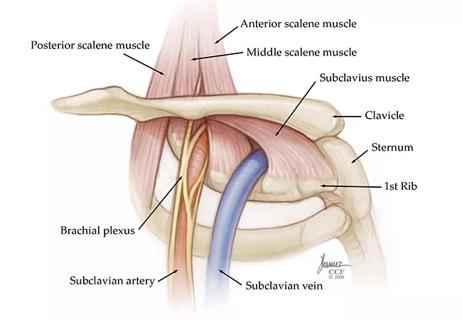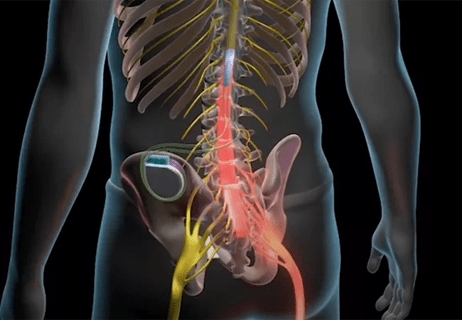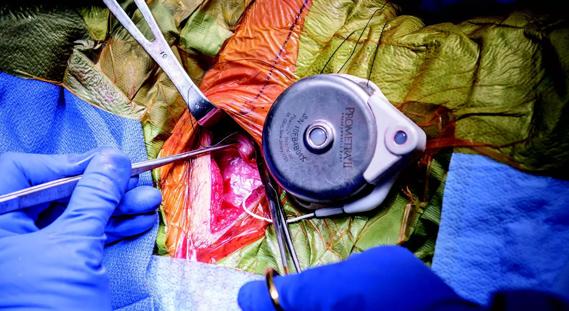Know diagnostic criteria to make quicker referrals for specialized care, expert urges

Chronic pain may be complicated and multi-factorial, but the rare yet devastating condition known as complex regional pain syndrome (CRPS) takes complexity to a new level. The fact that it’s had more than 32 names says something about the extent to which it has eluded definition.
Advertisement
Cleveland Clinic is a non-profit academic medical center. Advertising on our site helps support our mission. We do not endorse non-Cleveland Clinic products or services. Policy
Still misdiagnosed and misunderstood — though less so within the past decade with growing awareness of its unique signs and symptoms — it’s one of the most enigmatic disorders healthcare professionals are likely to see.
But clinicians should know when a patient presents with CRPS or when a pain condition that resists standard treatment may be CRPS, says Michael Stanton-Hicks, MD, a consultant in the Pain Management Department at Cleveland Clinic.
An earlier referral to a pain management specialist or rheumatologist can help ensure timely and appropriate intervention and increase the likelihood of a better outcome, says Dr. Stanton-Hicks, who is a world leader in CRPS research, diagnosis and treatment. Though specialists generally emphasize remission rather than cure for CRPS patients, early specialized care may significantly improve the prognosis, particularly in children, he says.
That care should focus on rehabilitation of the affected limb to prevent or reduce disability, according to Dr. Stanton-Hicks. A single sympathetic nerve block may provide sufficient pain relief to enable the patient to undergo therapy.
Bisphosphonates have also shown promise as a treatment in the early stages of CRPS. Although they’re not an analgesic, they may be useful in relieving pain in CRPS patients because of their effect on the immune response, he says.
CRPS’s hallmark is persistent, intense burning pain that is out of proportion to the severity of the precipitating injury. In most cases the trigger is an arm, leg, hand or foot fracture or sprain. It can also be elicited by immobilization or appear seemingly spontaneously. It gets worse, not better, with time, and it often spreads throughout the affected limb. Women with CRPS out-number men by a ratio of 3:1.
Advertisement
Pioneering work by Dr. Stanton-Hicks and an international team of pain medicine specialists led to the first diagnostic criteria for CRPS in 1993.
The latest version of these criteria, accepted in 2010 by the International Association for the Study of Pain (IASP), requires one sign or one symptom in at least two of the following categories — in addition to severe disproportionate pain—for a CRPS diagnosis:
CRPS’s complexity revolves partly around the array of mechanisms that appear to play a role in its etiology and progression. In a 2019 article in Regional Anesthesia and Pain Medicine, Dr. Stanton-Hicks reviews research pointing to evidence for musculoskeletal, immune, autoimmune, central and peripheral nervous system, autonomic nervous system and genetic factors in CRPS. Whether all these mechanisms come into play in every case is not known.
The possibility of autoimmune mechanisms with a genetic basis has been added most recently to the mix. “All of the studies that have shown a genetic basis for CRPS have been small cohorts, but there are sufficient reports now that point to something about the genetic makeup that predisposes people to this condition when circumstances are right for a trigger, such as trauma,” says Dr. Stanton-Hicks. He notes that he has seen several families in which several members have had CRPS.
Advertisement
In one study, researchers serendipitously noticed an improvement in patients with CRPS who were receiving intravenous immunoglobulin (IVIG) therapy for other diseases. The observation led to a small but promising 2014 pilot study of IVIG for CRPS, followed by a larger prospective randomized controlled study in 2017.
That larger study failed to show significant reductions in pain in CRPS patients with IVIG therapy. However, Dr. Stanton-Hicks observes that those findings may stem more from factors related to the inherent complexity of CRPS studies involving humans than from the impact of IVIG therapy itself.
Translational studies using animals have yielded insights supporting an autoimmune basis for CRPS. One study reported hyperalgesia and increasing pain behavior in animals in response to mild tissue trauma after being exposed to immunoglobulin G taken from humans with CRPS. Other animal studies have offered evidence that CD20 B cells produce antibodies that may promote CRPS-like changes.
A 2009 human study used flow cytometry to demonstrate the presence of surface-binding autoantibodies against an inducible autonomic nervous system autoantigen in 30% to 40% of CRPS patients.
These studies point to the use of IVIG and other biologics as adjuncts to current treatments and the development of specific immunotherapies as promising areas for future research, Dr. Stanton-Hicks says.
Advertisement
Advertisement

Researchers seek solutions to siloed care, missed diagnoses and limited access to trauma-informed therapies

Study participants also reported better sleep quality and reduced use of pain medications

Two-hour training helps patients expand skills that return a sense of control

Program enhances cooperation between traditional and non-pharmacologic care

National Institutes of Health grant supports Cleveland Clinic study of first mechanism-guided therapy for CRPS

Pain specialists can play a role in identifying surgical candidates

Individual needs should be matched to technological features

New technologies and tools offer hope for fuller understanding